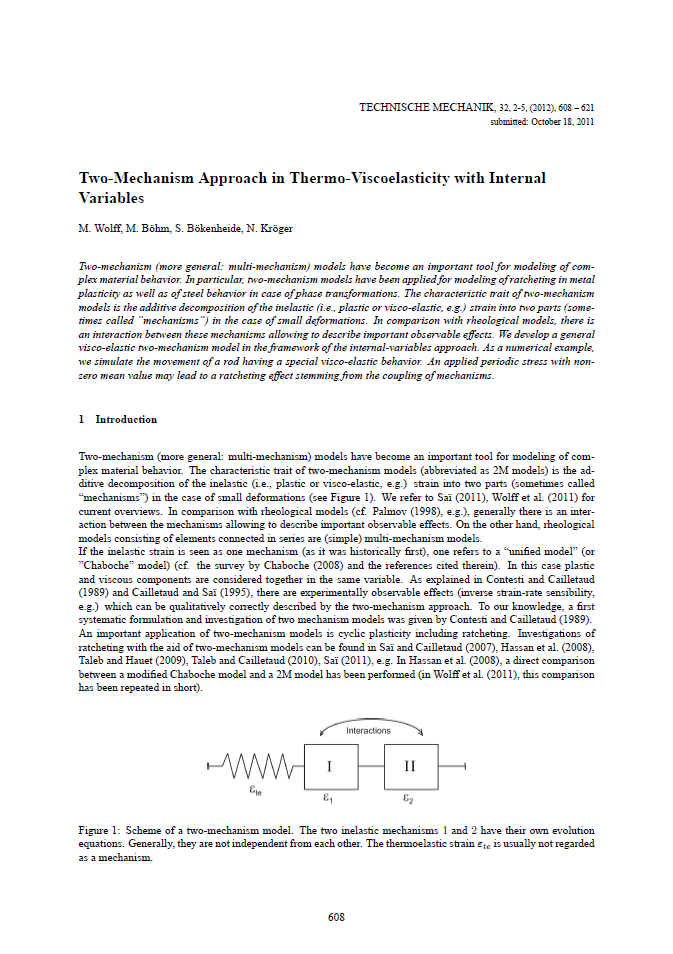Two-Mechanism Approach in Thermo-Viscoelasticity with Internal Variables
Abstract
Two-mechanism (more general: multi-mechanism) models have become an important tool for modeling of complex material behavior. In particular, two-mechanism models have been applied for modeling of ratcheting in metal plasticity as well as of steel behavior in case of phase transformations. The characteristic trait of two-mechanism models is the additive decomposition of the inelastic (i.e., plastic or visco-elastic, e.g.) strain into two parts (sometimes called “mechanisms”) in the case of small deformations. In comparison with rheological models, there is an interaction between these mechanisms allowing to describe important observable effects. We develop a general visco-elastic two-mechanism model in the framework of the internal-variables approach. As a numerical example, we simulate the movement of a rod having a special visco-elastic behavior. An applied periodic stress with nonzero mean value may lead to a ratcheting effect stemming from the coupling of mechanisms.





